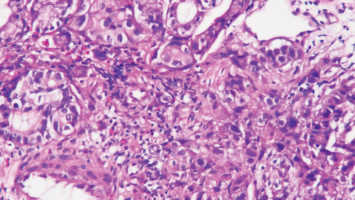
Living cells compete with each other and try to adapt to the local environment. Cells that are unable to do so are eliminated eventually. This cellular competition is crucial as the surrounding normal epithelial cells use it to identify and eliminate mutant cancer cells.
Studies have reported that when activating mutants of “Ras” proteins are expressed in mammalian epithelial cells, they are pushed toward the lumen, excreted along with other bodily waste, and eliminated by competition.
Epithelial cells containing Ras mutants have been reported to be removed in this manner in several organs, including the small intestine, stomach, pancreas, and lungs. This suggests that cell competition is an innate defense system orchestrated by epithelial cells to prevent the accumulation of incidentally produced cancerous cells and thereby suppress cancer formation.
In general, mutations in multiple genes accumulate in a stepwise manner when normal cells become cancerous. However, it is not known how cell competition is affected by this process. For instance, human colorectal cancer develops when the adenomatous polyposis coli (APC) gene becomes dysfunctional and activates “Wnt signalling,” followed by the activation of Ras signalling.
In a recent study, a team of researchers from Japan, led by Associate Professor Shunsuke Kon of the Department of Cancer Biology, Institute of Biomedical Research and Innovation, Tokyo University of Science (TUS), examined the effects of the accumulation of stepwise gene mutations on cell competition and investigated the role of cell competition in the actual cancer formation process. Their study was published in Nature Communications with Mr. Kazuki Nakai, a third-year PhD student at the Graduate School of Life Sciences in TUS, as the lead author.
The study results showed that when Wnt signals were activated in epithelial cells, cell competition function was altered. Activated Ras mutant epithelial cells, which would normally be eliminated into the lumen, instead infiltrated diffusely into the tissue to form highly invasive cancerous tumours.
As senior author Dr. Kon explains, “We discovered that in epithelial tissues where Wnt and Ras signals, which commonly occur in human colorectal cancer, are activated in stages, the function of cell competition is altered. It was revealed that the production of cancer cells that diffusely infiltrate into the interstitium is promoted.”
Further, the research team identified an increased expression of matrix metalloproteinase 21 (MMP21) as one of the mechanisms underlying the production of diffusely invasive cancer cells in early colorectal cancer due to abnormal cell competition. This, in turn, was shown to be directly caused by activation of nuclear factor kappa B (NF-κB) signals via the innate immune system. Blocking NF-κB signalling restored the luminal elimination of Ras mutant epithelial cells. These findings raise some intriguing questions, such as "How do transformed cells sense the cellular content that leads to the NF-B-MMP21 pathway?" and "How do surrounding cells recognise transformed cells and prepare them for cellular extrusion?" These questions will almost certainly need to be addressed in the future.
The results of this research show that cancer cells with accumulated, sequential genetic mutations, alter the function of cell competition and use it to enhance their own invasive ability. Instead of being eliminated to the lumen, they infiltrate into the tissue, producing high-grade cancer cells. While the research team did note that the cancer histopathology of the mice used in this study resembled diffuse-type cancer in humans, future research is needed to determine whether the NF-κB-MMP21 pathway is relevant to other cancers. For instance, investigating scirrhous gastric cancer, a typical diffuse-type cancer, would be particularly interesting.
Overall, these findings demonstrate that Wnt activation disrupts cell competition, and confers invasive properties on transformed cells to escape primary epithelial sites. Understanding how the molecular landscape is re-modelled to change the fate of cancer cells with high mutational burdens could be used for therapeutic purposes. This could be of interest to researchers focused on Wnt signalling or cancer research, such as those at the Koch Institute for Integrative Cancer Research at MIT and Cancer Research UK, who are working towards common goals.
Dr. Kon concludes by saying, “This study further brings forth the prospect that cell competition constrains the order of appearance of mutations during tumour development, highlighting a link between cell competition and carcinogenesis. We hope that this will pave the way for the development of new cancer treatments from the standpoint of cell competition and infiltration for the benefit of our society.”
Source: Tokyo University of Science
The World Cancer Declaration recognises that to make major reductions in premature deaths, innovative education and training opportunities for healthcare workers in all disciplines of cancer control need to improve significantly.
ecancer plays a critical part in improving access to education for medical professionals.
Every day we help doctors, nurses, patients and their advocates to further their knowledge and improve the quality of care. Please make a donation to support our ongoing work.
Thank you for your support.